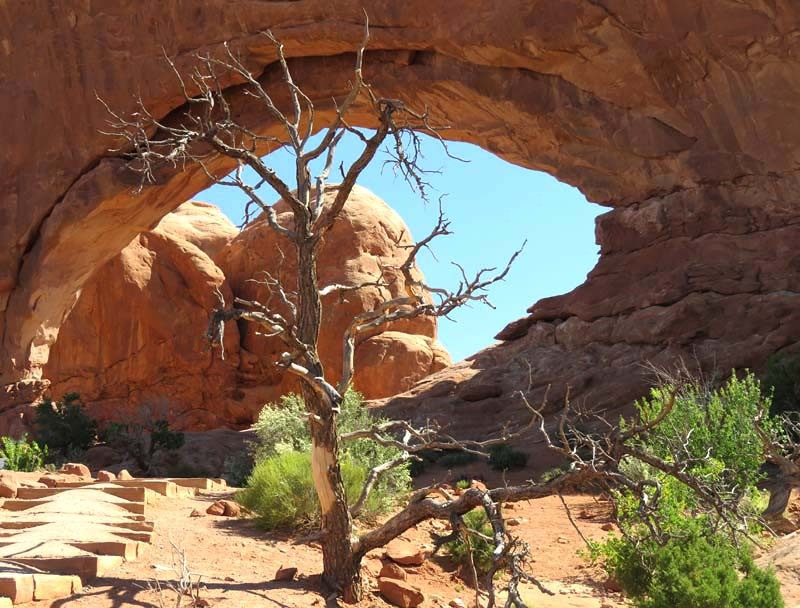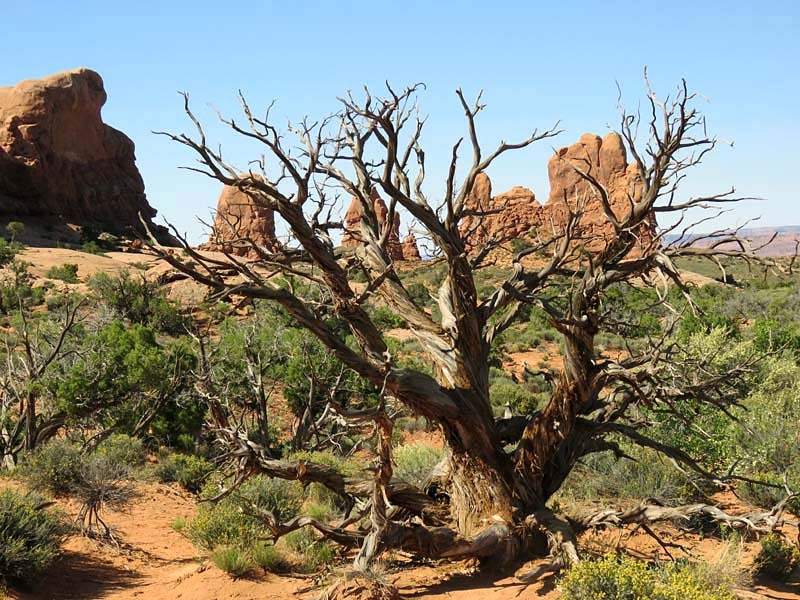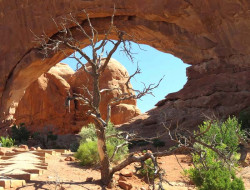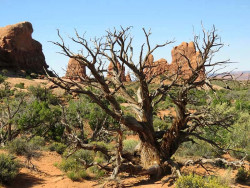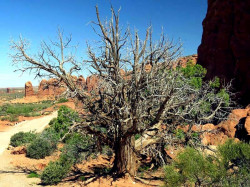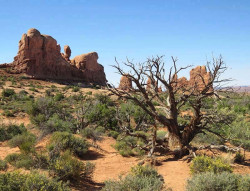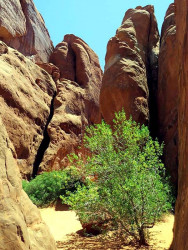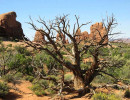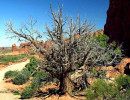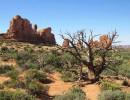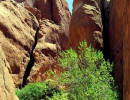Arches National Park
Arches National Park
Over 400 kinds of plants grow and flourish in Arches, despite extreme temperatures and low rainfall. Mixed stands of pinyon, a type of pine, and Utah juniper cover millions of acres in the southwest, including much of Arches. These trees grow closely associated and dominate the landscape in dry, rocky terrain at elevations between 4,500 and 6,500 feet. As elevation decreases, trees become more scattered and Juniper is more common because it is more drought resistant than pinyon.
Pinyons have crooked trunks, reddish bark and are very slow-growing. Trees 4 to 6 inches in diameter and 10 feet tall may be 80 to 200 years old. Their root systems are extensive and often mirror the size of the above-ground tree. Pinyons produce compact cones that contain tasty, protein-rich seeds called pine nuts. Pine nuts were a major source of food for Native Americans and are still popular today. Animals like the bushy-tailed woodrat, the pinyon mouse and the pinyon jay also prize them.
The Utah juniper is the classic desert tree. Its twisting, often dead branches seem to epitomize the struggle of life with little water. When moisture is scarce, a juniper will stop the flow of fluids to some outer branches so that the tree has a better chance of survival. Scale-covered leaves and bluish, waxy-coated seeds help the tree conserve moisture.
